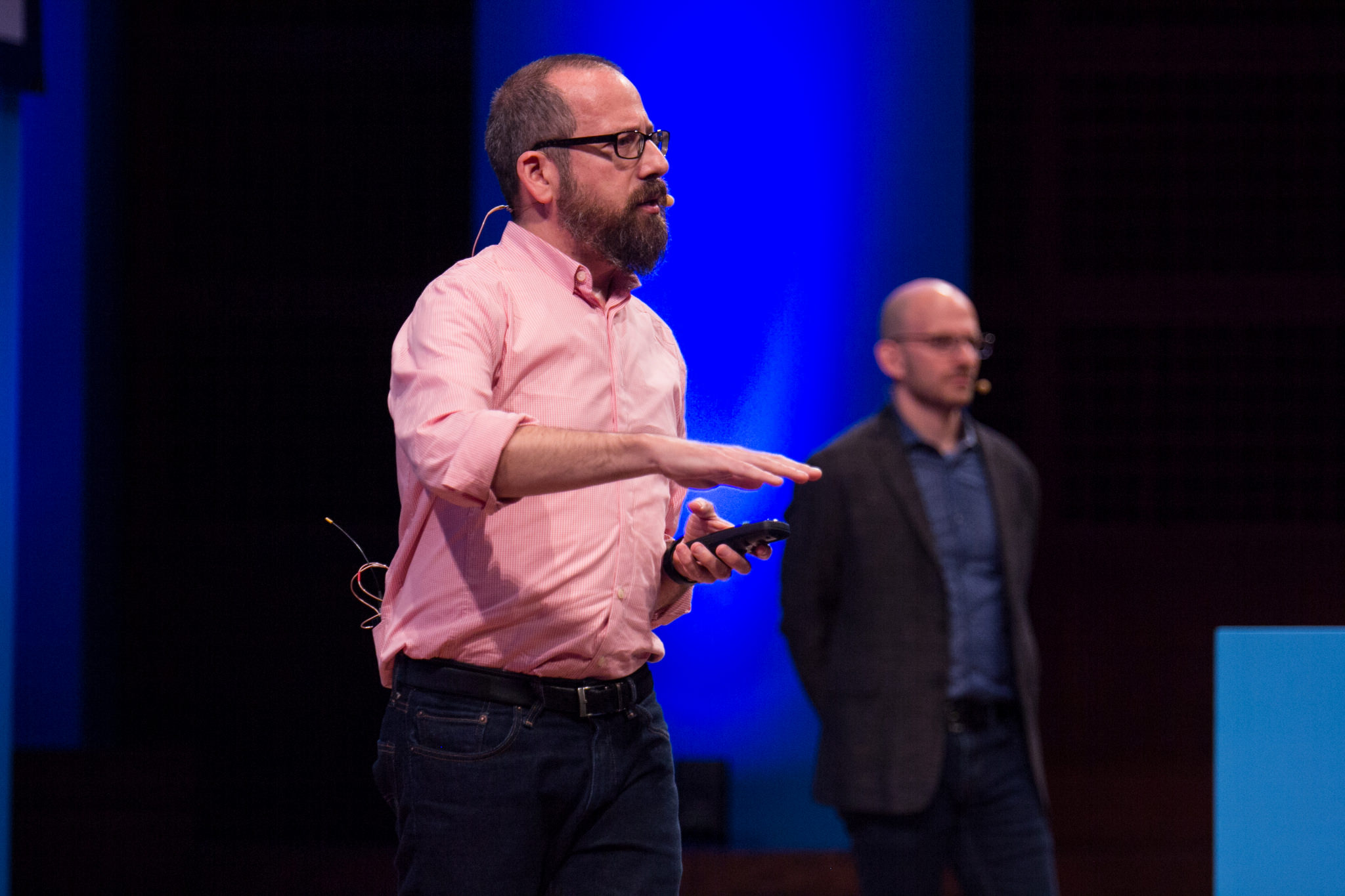Millennials have been the pioneers of digital product management. They’ve been through the biggest transition in terms of adopting new technology. They have experienced both analog and digital versions of the same tools and products and have adopted both in their daily lives.
As millennials entered the workforce, they significantly shaped the discipline of product management, influenced by their unique position between the analog and digital worlds. Born between 1981 and 1996, Millennials were the first generation to grow up with widespread access to the internet and mobile technologies, experiencing a mix of old-school and digital media during their early years. This exposure has enabled them to easily relate to evolving consumer behavior, as they were themselves part of the audience transitioning from traditional to digital platforms. Empathetic to their user base, Millennials have been adept at building digital and physical products that they, and by extension others, would find useful in their everyday lives. Their first-hand experience and adaptability has allowed them to explore strategies to enhance and scale these products by optimizing their technical architectures and designs.
Today, Generation Z (Gen Z), born from 1997 onward, is coming of age in a markedly different landscape. Growing up fully immersed in digital technology and social media, this generation has been shaped by the rapid advancement of technology and the economic uncertainties of the post-2008 financial crisis world. These factors contribute to their distinct consumer behaviors, marked by a higher emphasis on authenticity, ethical practices, and digital nativity compared to previous generations. Unlike Millennials, who witnessed the evolution of digital products, Gen Z has only known a world rich in digital solutions, which influences their expectations and interactions with technology. Traditional product management practices have primarily targeted millennials, but we may now need to reevaluate our approach to building a digital product-driven business. Methods that have worked in the past may not resonate with the preferences and behaviors of Gen Z.
Understanding these generational nuances is essential for product managers aiming to develop strategies that resonate with both groups. While Millennials catalyzed the evolution of product management by integrating their lived experiences into product development, Gen Z's inherent digital fluency and value-driven purchase behaviors are refining these strategies further, pushing for advancements that are not only technologically innovative but also socially conscious and inclusive.
How do these two generations differ? Let’s start with millennials and the core ways of building a product for millennials.
Millennials were the first adopters of the internet and the generation that has seen technology evolve from its infancy to adulthood. With generative AI, millennials continue to adapt and use newer technology. However, millennials grew up using desktop-first applications before moving to mobile applications. And a significant number of millennials still use web applications on desktop computers for better ease of use and comfort. However, one piece of research shows that millennials spend about 40% of their time using desktop web applications which still shows the need to build a robust desktop strategy.
Millennials have traditionally appreciated brand loyalty programs and tend to enjoy loyalty benefits based on what suits their needs. They engage with brands on social media and blogs and tend to be loyal to the brands once they trust them.
While willing to invest in technology, millennials are also budget conscious. They look for value in their purchases, often comparing options to find the best quality at a reasonable price.
Millennials prioritize values, ethics and authenticity, with a strong concern for sustainability and social responsibility. During a project at TikTok, a survey conducted by a third party revealed that older Millennials desire more authentic content, verified by industry experts, before fully trusting a brand.
Millennials were the early adopters of technology. They are comfortable to navigate product design even if they’re complex systems. While they prefer user-friendly design, they may care more about the functionality of it and therefore are happy with the learning curve as long as it solves their problems.
Millennials appreciate technology that improves output and enables productivity and connectivity. They’re known for pioneering the “gig economy” and therefore appreciate products that help them accomplish their goals.
Brands like Away, Warby Parker, Allbirds, Stitchfix in the US, and Gymshark, Made.com, Mytheresa, Sézane, Heureka in Europe have made their mark in the millennial era through a direct-to-consumer strategy. Often referred to as digitally native brands due to their primarily online sales channels, these brands sell physical goods but emphasize a strong online shopping experience. As millennials tend to be hybrid shoppers, these brands, initially focused on the digital realm, have also ventured into traditional retail channels to cater to the varied shopping experiences preferred by this generation.
While Gen Zs tend to have similar needs, they differ from millennials in several key ways which need a fresh product management perspective. Let’s talk about some of the areas that align closely with Gen Z values.
They are the first true digital natives, having been exposed to the internet, social media and mobile devices from a young age. Their fluency with technology is innate and they are adept at navigating and using multiple platforms simultaneously.
They place a high emphasis on authenticity, transparency, and ethical business practices. They are more skeptical of traditional advertising and can be less brand-loyal, favoring products that align with their personal values and social causes. They tend to support companies that demonstrate transparency, and a commitment to reducing their environmental impact.
Gen Z is drawn to brands that adhere to ethical practices, such as responsible sourcing, fair labor standards, and a stand on social injustices. For instance, Brands like H&M and Zara have faced criticism and scrutiny for their rapid production processes, which often involve poor labor conditions and significant environmental damage. This awareness has led to a rise in support for sustainable fashion brands and second-hand clothing markets among Gen Z, who prefer companies that prioritize environmental sustainability, ethical labor practices, and transparency in their sourcing and production practices..
Gen Z demonstrates a keen awareness of data privacy and security concerns. They prioritize transparency and ethical data governance practices, emphasizing the importance of respecting their privacy, personal information, and digital footprint. For example, during interviews, a group of Gen Z individuals highlighted the significance of setting "strictly necessary" cookies as the default option for websites and apps, reflecting their cautious approach to personal data management.
Echoing their values of privacy and ethical practices, Gen Z demands products that are marketed authentically and are accessible and inclusive. Preferring straightforward, needs-based marketing over flashy, sponsored content, they seek value additions to their lives through offerings that are universally accessible, relatable, and in line with their principles. For instance, on a given e-commerce marketplace, Gen Z is more likely to trust products endorsed by creators over those that are broadly marketed.
We can surmise that Gen Z favors smaller scale settings, extending beyond just boutique, family-owned businesses to include products and features that are succinct and to the point. For instance, BeReal, an app that captures a user's day in a snapshot, exemplifies a straightforward and concise approach to social media engagement.
Gen Z tends to have less disposable income, so has a higher barrier to impulsive purchases. They favor products and services that require lower financial commitment. For instance, Klarna appeals to Gen Z by offering flexible, immediate purchasing options without traditional credit requirements. Similarly, thrift stores like Poshmark and Depop have become popular among Gen Z, showcasing their preference for more affordable, sustainable shopping choices.
Both cohorts have shared characteristics. They both navigate similar challenges in today's world, linked by the ubiquitous influence of technology—whether they grew up immersed in it or adapted to it over time. By slightly tweaking their strategies, contemporary product managers can design products that appeal to all users.
How can product managers craft a product strategy that resonates with both millennials and Generation Z? The answer lies not in a one-size-fits-all solution but in adhering to the foundational principles of product management.
Keep the lines open for user feedback from both generations. Talking to users is the easiest way to stay connected and in-tune with the market. SnapChat, for example, received significant backlash when it rolled out a new feature merging stories and chat. It adapted to feedback and was able to retain its user base by quickly learning and adapting. So use what you learn to make fast iterations on your product. Think of it as an ongoing conversation that shapes your roadmap.
Tailor experiences to allow personal touches for users, ensuring the product feels relevant to everyone. Consider the nuances in how different generations interact with your product and adjust accordingly. The more you can make this part of the ongoing product culture, the more in-sync you will be both generations at the same time. For example, Spotify wrapped is a feature that resonates with every user on the platform and is a big hit at the end of the year. This feature not only provides fun insights and statistics but also encourages sharing across different social platforms. This is how Spotify has been able to keep its user base, regardless of whether they are Gen Z or Millennial engaged, demonstrating a dynamic approach to product management.
Amplify your commitment to ethics and sustainability. As examples, Patagonia dedicates a significant portion of its profits to climate change and Salesforce is very vocal in the space of sustainability and has its product management/business practices centered around sustainability. It’s not just about what your product does but how it resonates with the broader concerns of your users, connecting over shared values. Just like the principles mentioned earlier, these values should be deeply embedded within your product culture. The essence of authenticity is in "walking the talk," which begins with genuine communication.
Product managers must remain agile, empathetic, and data-driven while also being willing to innovate and adapt to the distinctive needs and values of each generation. By leveraging these core principles, they can execute a product strategy that not only acknowledges but celebrates the unique contributions and preferences of both generational cohorts, paving the way for products that are universally valued, embraced and loved.
Please note that the content above represents the author's personal opinion and does not reflect the positions of the mentioned organizations in any way.
Explore more great product management content by exploring our Content A-Z





Comments
Join the community
Sign up for free to share your thoughts